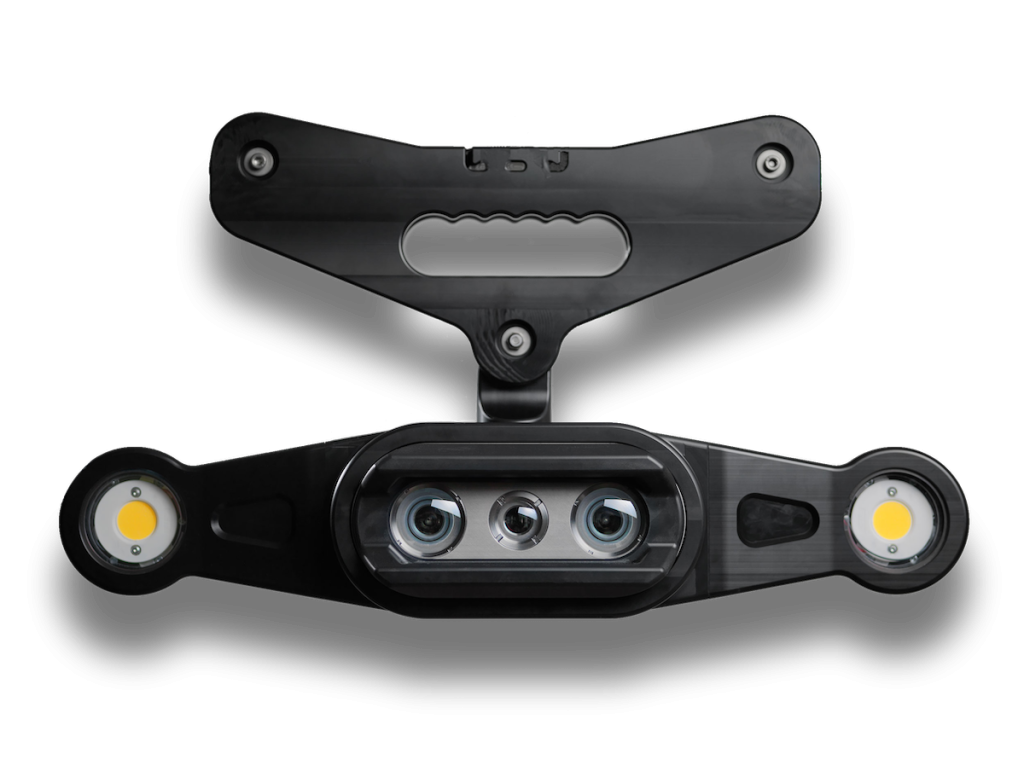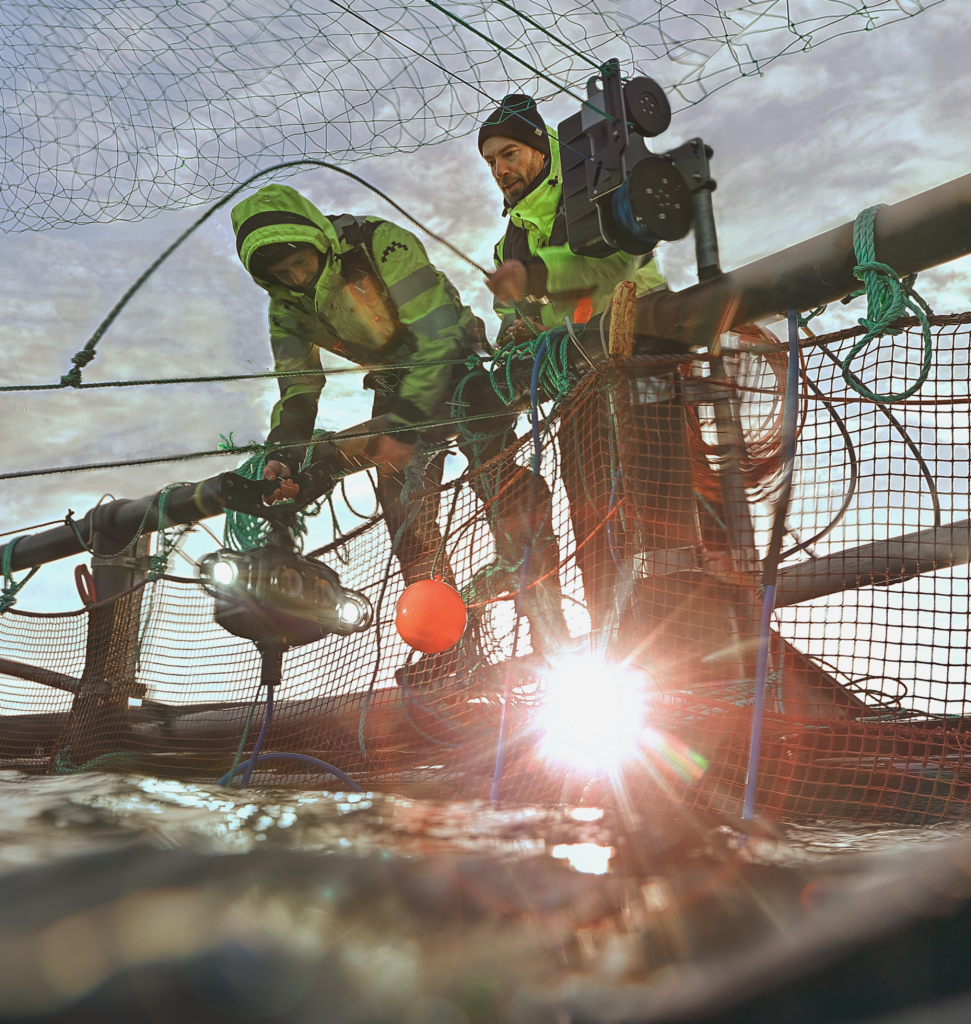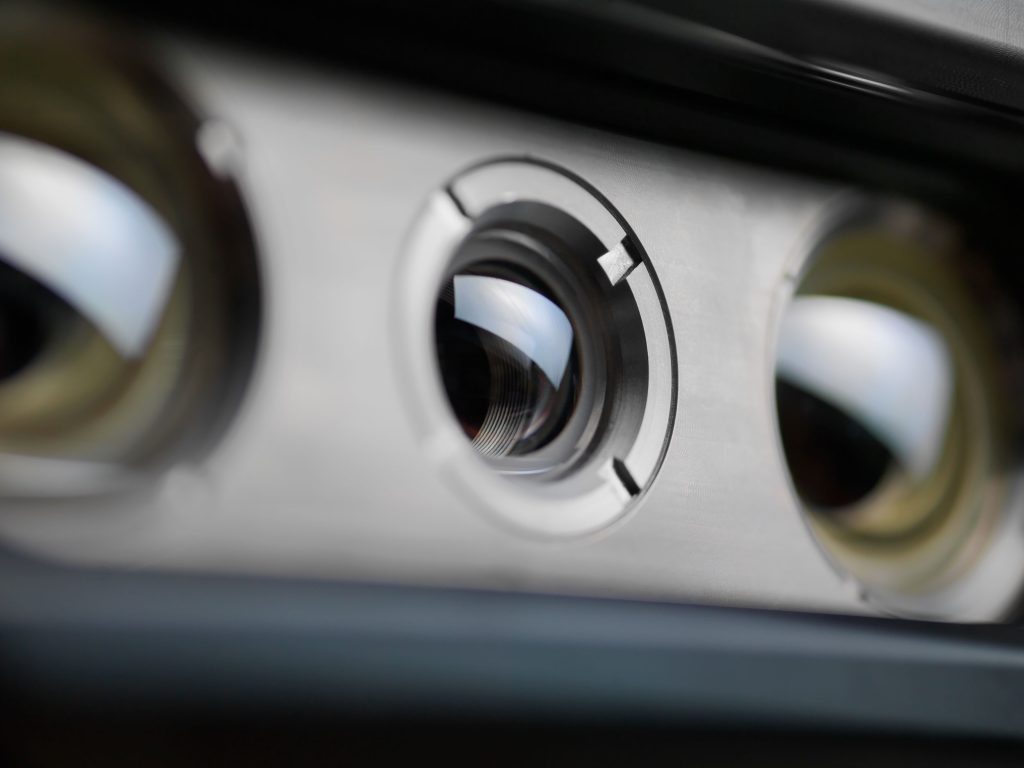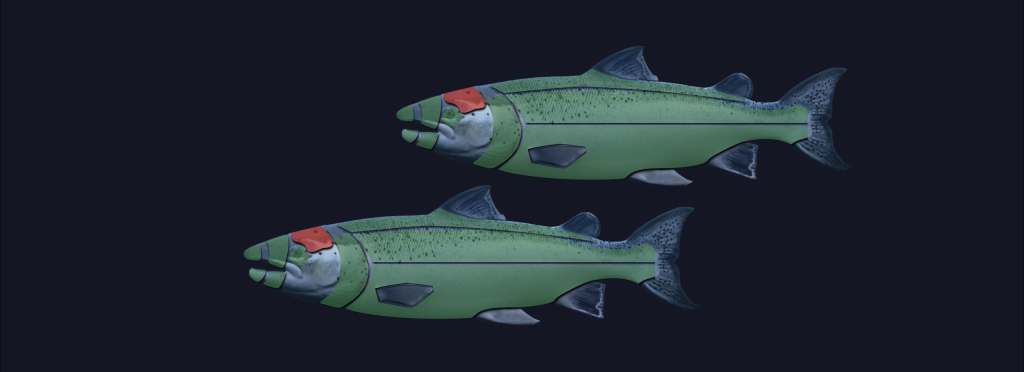On equipment submerged in water, biofouling and algae will quickly accumulate. This also applies to cameras in pens and tanks. While biofouling and algae on the camera housing are not necessarily critical, covered camera lenses and sensors can cause significant issues. Clean lenses and sensors are essential for high-quality images and reliable data collection, which in turn form the foundation for accurate lice counting, precise biomass estimation, and valuable monitoring of fish health and environmental conditions.

Self-cleaning technology
Our Hammerhead camera has self-cleaning lenses and self-cleaning sensors. UV light-based technology ensures that they remain clean – often throughout an entire production cycle. The benefits of this self-cleaning technology are numerous. Here are seven of them:
Higher data quality
Systems that use machine learning and AI to interpret images rely on high image quality to deliver accurate data. Clean lenses and sensors are essential for optimal analysis and high-quality data.
Continuous and more reliable monitoring
Stable access to high-quality data ensures reliable, uninterrupted monitoring. This is essential for continuously tracking trends and developments in lice levels, growth, welfare, and behavior.

Lower workload
Manual cleaning of camera lenses and sensors is labor-intensive and time-consuming, as the camera must be removed from the water. Self-cleaning lenses eliminate this task for staff, freeing up time for other important activities.
Lower operating costs
In submerged production, divers are required to clean cameras and other equipment in the pen. Reducing the need for such demanding and costly diving operations lowers operating costs and results in significant savings.
Better fish welfare
Any activity in or around a pen or tank can increase stress levels in the fish. This also applies when cameras need to be removed for cleaning. Lower stress levels contribute to better appetite, reduce the risk of injuries, and improve fish welfare. Fish thrive and grow best when left undisturbed.
Increased operational efficiency
Fewer operational interruptions ensure more stable production and better oversight of environmental conditions in the pen. Cameras that function optimally over extended periods enable continuous monitoring and enhance operational efficiency.
Cameras with self-cleaning lens and sensor technology ensure long-term data quality, more reliable monitoring, reduced workload and costs, improved fish welfare, and increased operational efficiency. This applies to all production methods, both at sea and on land.






